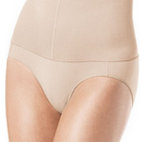Press Girl Meets Dress | Sustainable News | Dress hire uk
This morning we were reading an article mentioning dress rental Girl Meets Dress in the context of how the fashion industry is evolving in order to decrease fast fashion. The article is below by Barney Cotton on BUSINESS LEADER https://www.businessleader.co.uk/hm-and-zara-the-sustainable-fashion-brands-killing-the-environment/56166/
“H&M AND ZARA, THE ‘SUSTAINABLE’ FASHION BRANDS KILLING THE ENVIRONMENT
H&M and Zara are the two largest fashion retailers in the world, contributing enormously to the fashion industry being worth $2.4tn. Both launched sustainable and ethical clothing collections, but do they really care for the environment or are they simply contributing to the monsters in our closets?
The fashion industry is the second largest polluter in the world, coming second to the oil sector. 20% of industrial water pollution stems from textile development and this booming industry emits 1.2 billion tonnes of greenhouse gas emissions a year.
These appalling consequences of the lucrative fashion industry are only going to increase as consumers continue to buy cheap clothes. By 2050, it is estimated that clothing production will account for 25% of the world’s carbon budget. That’s more than road transport and agriculture.
The problem isn’t what’s available to buy, it’s the throwaway culture of continuously buying new garments.
So, what’s the cause? Fast fashion.
WHAT IS FAST FASHION?
Fast fashion is the mass-production of cheap clothes, a trend that has exacerbated with the influx of retailers, like H&M and Zara, offering never-ending seasons of new clothes. It amounts to over 80 billion garments being sold to customers annually.
The fast fashion model has spiraled into a marketer’s dream. Consumer purchase behaviours are driven by short-term pleasure. We show off our wealth, style and personality but once this temporary fulfilment is over, it’s a vicious cycle to continuously satisfy our rational materialistic values, becoming a desire not a necessity.
With continuous targeted advertisements, sales and discounts, it’s hard to resist.
H&M – HYPOCRITES OR ADVOCATES FOR SUSTAINABLE FASHION?
H&M imply they’re leading the industry towards a sustainability wave. But is this just a publicity stunt to increase revenue or do they really care?
H&M’s Conscious collection is ethically sourced and uses recycled and organic materials for ladies, men’s and kids’ fashion. With clothes as cheap as £5, is this just promoting our short-term habits of single-use clothing? This sustainable range accounts for only 5% of their overall products, so how conscious are they of our planet?
Their recycling initiative offers customers vouchers for recycling old clothing but this only influences further consumptions, relying on the fast fashion model.
However, H&M can be praised for taking a step in the right direction beginning with their sustainable clothes and raising awareness of the worrying side effects of our shopping addictions.
IS ENVIRONMENTALLY FRIENDLY FASHION NEXT SEASON’S TREND FOR ZARA?
Inditex Group, the owner of Zara, are the largest fashion company in the world, meaning they have an enormous potential to reduce our environmental impacts. They’ve been ranked as the most sustainable fashion company by Dow Jones Sustainability Index, so what are they doing?
Zara aim to stop sending all unused textiles to landfills by 2020. Their goal is to develop an efficient life cycle for their clothes, meaning less textile landfill waste. They’ve begun taking steps by reusing unused textiles.
Like H&M Conscious, Zara have started using recycled materials and ecologically grown cotton through the Zara Join Life range, a trendy and reasonably priced collection which has significantly grown in popularity since launching in 2016.
THE RETAIL SUPPLY CHAIN’S ENVIRONMENTAL IMPACTS
Fashion isn’t always pretty – every step of the fashion supply chain has horrendous statistics. For each tonne of dyed fabric, 200 tonnes of water is needed. With factories in countries such as India, Bangladesh and China churning out thousands of items per minute, these effects are aggravated to an alarming level of 1.5 trillion litres of water used annually.
The shocking costs to our environment can be seen by the complete loss of the Aral Sea, where cotton production has converted a sea into a desert.
The problem doesn’t stop after clothing has been produced. A report by the UN found 90% of chemically infused wastewater in developing countries is released into local rivers and is used by locals daily.
Once we’re bored of our clothes what happens? In the UK alone, we throw away 300,000 tonnes of clothing a year to landfills. Synthetic fibres, like polyester, are used in 72% of modern clothing and they’re non-biodegradable, meaning each garment can take up to 200 years to decompose.
THE FUTURE OF THE FASHION INDUSTRY
How can we move on from the fast fashion model without compromising the profits of brands who are already facing difficulties with high street retailing?
It’s a commercial challenge, but organisations like Greenpeace and The True Cost, a Netflix documentary, are raising awareness amongst shoppers. If consumer desires evolve, the industry will have to respond, but it won’t be a quick process.
Clothing donations to charities have increased by 2.3% annually, suggesting a step towards a longer life-cycle for our clothes.
Suit hire is already a norm for men’s formalwear, and rental clothing companies such as Girl Meets Dress, are now offering short-term access to bespoke gowns and designer gear at low costs.
The rental model aims to reduce the amount of clothing we buy and avoids the ‘not wanting to be seen in the same outfit twice’ crisis. Is sharing caring? Girl Meets Dress believe their service will satisfy our insatiable appetite for fashion but how can it compete with the likes of Boohoo and ASOS offering next-day delivery to outright buy cheap clothes.
Who’s going to take responsibility? Is it up to retailers, factories, consumers or the government to address the facts and begin a new fashion trend.”


 Designer A-Z
Designer A-Z 








